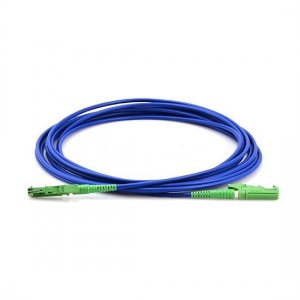Armoured Fiber Optic Cable: A Comprehensive Guide

# Armoured Fiber Optic Cable: A Comprehensive Guide
## Introduction to Armoured Fiber Optic Cables
Armoured fiber optic cables are a specialized type of fiber optic cable designed with additional protective layers to withstand harsh environmental conditions and physical stresses. These cables combine the high-speed data transmission capabilities of traditional fiber optics with enhanced durability, making them ideal for demanding applications where standard cables might fail.
## Construction and Design Features
### Core Components
At its heart, an armoured fiber optic cable contains the same basic elements as standard fiber cables:
– Optical fibers (single-mode or multi-mode)
– Buffer coating
– Strength members
### Protective Layers
What sets armoured cables apart are their additional protective elements:
1. Metal Armour: Typically made of steel or aluminum, providing crush resistance
2. Interstitial filling: Water-blocking materials to prevent moisture ingress
3. Outer jacket: Additional abrasion-resistant coating
## Types of Armoured Fiber Optic Cables
### By Armour Material
1. Steel Wire Armoured (SWA)
2. Corrugated Steel Tape Armoured (CSTA)
3. Aluminum Wire Armoured (AWA)
### By Installation Environment
1. Direct burial cables
2. Aerial cables
3. Underground duct cables
4. Indoor/outdoor cables
## Key Advantages of Armoured Cables
### Enhanced Protection
The primary benefit of armoured cables is their superior protection against:
– Rodent damage
– Crushing forces
– Moisture and water ingress
– Extreme temperatures
– Chemical exposure
### Longevity and Reliability
Armoured cables typically offer:
– Longer service life in harsh conditions
– Reduced maintenance requirements
– Higher reliability in critical applications
## Common Applications
### Industrial Environments
– Manufacturing plants
– Oil and gas facilities
– Mining operations
– Power generation stations
### Outdoor Installations
– Military communications
– Transportation networks
– Utility infrastructure
– Telecommunications backbones
## Installation Considerations
### Handling Requirements
Despite their ruggedness, armoured cables require careful handling:
– Minimum bend radius must be maintained
– Proper pulling techniques to avoid damage
– Specialized termination procedures
### Environmental Factors
Installers must consider:
– Soil conditions for buried cables
– Temperature extremes
– Potential for chemical exposure
– UV resistance requirements
## Comparison with Non-Armoured Cables
Feature | Armoured | Non-Armoured
Physical Protection | Excellent | Basic
Weight | Heavier | Lighter
Flexibility | Less flexible | More flexible
Cost | Higher | Lower
Installation Complexity | More complex | Simpler
## Maintenance and Troubleshooting
### Routine Inspection
Regular checks should include:
– Visual inspection for jacket damage
– Connection point examination
– Performance testing
### Common Issues
Keyword: armoured fiber optic cable
Potential problems to watch for:
– Armour corrosion
– Moisture ingress
– Connector contamination
– Bend radius violations
## Future Trends in Armoured Fiber Technology
Emerging developments include:
– Lighter weight armour materials
– Improved flexibility without sacrificing protection
– Smart armour with embedded sensors
– Enhanced fire-resistant designs
## Conclusion
Armoured fiber optic cables represent a critical solution for applications requiring both high-performance data transmission and robust physical protection. While they come with higher costs and installation complexity compared to standard fiber cables, their durability and reliability in challenging environments make them indispensable for many industrial, military, and infrastructure applications. As technology advances, we can expect to see continued improvements in armoured cable designs that further enhance their performance and ease of use.

